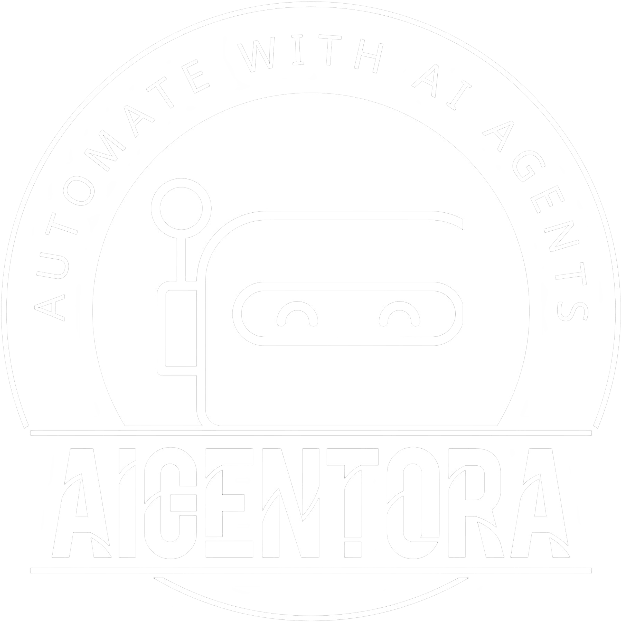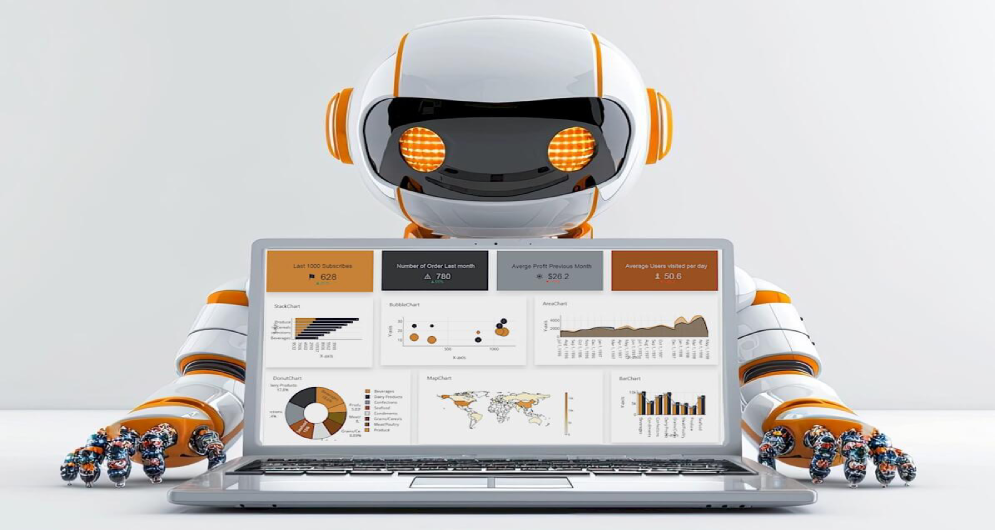AI-powered Business Intelligence (BI) dashboards are reshaping how modern organizations operate, analyze data, and make strategic decisions. Unlike traditional dashboards that only display historical data, AI-driven dashboards analyze, predict, and recommend—giving leaders real-time, forward-looking insights.
From sales forecasting to customer behavior analysis, these intelligent dashboards reduce guesswork, automate insights, and help businesses act faster in a highly competitive environment.
What Makes AI-Powered Dashboards Different?
Unlike traditional BI dashboards, which mainly visualize past data, AI-driven dashboards actively analyze, predict, and recommend actions. They don’t just show what happened—they explain why it happened and what is likely to happen next.
Key differentiators include:
Predictive analytics: Forecast future trends based on historical and real-time data.
Automated insights: Generate intelligent explanations without manual analysis.
Anomaly detection: Spot unusual behavior or risks in real time.
Natural language queries: Ask questions in plain English (“What will sales look like next quarter?”).
Actionable recommendations: Suggest the next best step for growth or risk reduction.
Why Businesses Need AI-BI Dashboards Today
- The Data Explosion
With data coming from IoT devices, customer interactions, social media, and enterprise systems, companies are overwhelmed. AI dashboards help filter signal from noise. Faster Decision-Making
Market dynamics change daily. Dashboards enhanced by AI ensure leaders act on current and forward-looking data rather than outdated reports.Competitive Advantage
Early adopters can detect trends, optimize resources, and improve customer experiences faster than competitors.Accessibility for All Users
AI-BI dashboards simplify complex data into intuitive visuals, empowering even non-technical teams to make data-driven decisions.
🚀 How AI-Powered Dashboards Improve Business Performance
 Data-Driven Product Development
Data-Driven Product Development
Identify emerging market trends using predictive analytics
Prioritize features based on customer feedback and sentiment analysis
Automate competitor analysis and opportunity mapping
💼 Sales & Revenue Growth
Forecast pipeline opportunities with greater accuracy
Use AI to generate deal insights and risk scores
Spot upsell and cross-sell opportunities in real time
🛠️ Operations & Efficiency
Real-time monitoring of supply chains and inventory levels
Predictive maintenance powered by AI models integrated into dashboards
Automate recurring reporting tasks to save teams hundreds of hours
💬 Smarter Customer Support & Experience
Deploy AI assistants within dashboards to analyze customer interactions
Automatically detect support trends and flag recurring issues
Personalize customer journeys by combining usage data with predictive insights
🔐 Security & Compliance
AI-powered anomaly detection in access logs and data
Automated compliance reports for GDPR, HIPAA, SOC 2
Dashboard alerts for suspicious activities or breaches
📈 Marketing & Growth Analytics
Measure campaign ROI instantly with predictive attribution models
Segment audiences with AI clustering for more targeted campaigns
Run “what-if” scenarios to optimize marketing spend
 AI Strategy for BI Dashboards
AI Strategy for BI Dashboards
1. Discovery & Alignment
Identify KPIs and decision areas where AI can add the most value.
2. Model Selection & Training
Use fine-tuned machine learning or LLMs trained on your business data.
3. Integration with Data Sources
Connect CRM, ERP, finance, and marketing systems for holistic views.
4. Deployment & Feedback
Launch as a pilot, gather feedback, refine models continuously.
5. Scalability & Governance
Ensure dashboards scale with data volume and comply with data privacy regulations.
Key Features of AI-Powered BI Dashboards
Real-Time Data Monitoring: Get live updates instead of waiting for batch reports.
Forecasting Capabilities: Predict demand, revenue, or operational needs with confidence.
What-If Scenarios: Test strategies before committing resources.
Personalized Views: Tailor dashboards to roles—executives, sales teams, marketers, or analysts.
Integration with Enterprise Tools: Connect CRMs, ERPs, marketing platforms, and cloud data lakes.
Use Cases Across Industries
Retail & eCommerce: Forecast product demand, track customer sentiment, and optimize inventory.
Healthcare: Predict patient needs, allocate staff, and monitor outcomes in real time.
Finance: Detect fraud, assess risks, and automate compliance monitoring.
Manufacturing: Implement predictive maintenance and optimize supply chains.
Marketing & Sales: Automate campaign performance analysis and forecast conversion rates.
Future of AI in Business Intelligence
The next generation of BI dashboards will integrate:
Augmented analytics: AI generating narrative explanations alongside graphs.
Voice-driven insights: Conversational BI where users can “ask” their dashboards.
AR/VR visualizations: Immersive data experiences for deeper analysis.
Fully prescriptive AI: Dashboards that don’t just recommend but execute actions (e.g., auto-adjusting supply orders).
🧭 Competitive Advantage with AI Dashboards
Unlock business-specific intelligence: Train models on your internal data for unique insights.
Automate workflows: From reporting to anomaly detection, save time and resources.
Enhance decision-making: Move from reactive to proactive strategies.
Boost user adoption: Dashboards become easier to use with natural language and smart recommendations.
 Conclusion
Conclusion
AI-powered Business Intelligence dashboards are no longer futuristic—they are the present and future of decision-making. They combine real-time monitoring, predictive analytics, and automated recommendations to help organizations work smarter, not harder.
For businesses looking to gain a competitive edge, these dashboards represent a transformative step toward faster, more accurate, and data-driven decision-making.
At Aigentora, we help companies build and integrate AI-powered intelligence solutions tailored to their unique business needs.
🧠 Frequently Asked Questions
AI-powered BI dashboards are intelligent data visualization platforms that use artificial intelligence and machine learning to analyze massive amounts of business data in real time. Unlike traditional dashboards that only present historical data, AI-driven dashboards provide predictive analytics, anomaly detection, and automated insights. This allows businesses to move from reactive reporting to proactive decision-making, enabling leaders to anticipate future challenges and opportunities.
These dashboards improve decision-making by transforming raw, complex data into clear, actionable insights. AI algorithms process patterns across multiple data points and deliver predictions, trends, and recommendations instantly. Business leaders can use these insights to reduce risks, optimize operations, and identify growth opportunities. Instead of relying on guesswork, executives get accurate, data-driven guidance that speeds up strategic decisions and enhances competitiveness.
AI-powered dashboards benefit industries across the spectrum. In retail and eCommerce, they forecast demand, analyze customer sentiment, and optimize inventory. In finance, they play a crucial role in fraud detection, compliance monitoring, and risk analysis. Healthcare providers use them to track patient outcomes and predict medical trends, while manufacturers leverage them for predictive maintenance, supply chain efficiency, and logistics optimization. Marketing and sales teams also rely on AI dashboards to monitor campaign performance, improve lead scoring, and maximize ROI.
AI-powered dashboards are designed to integrate seamlessly with existing enterprise systems. They connect with CRMs, ERPs, cloud databases, IoT platforms, and marketing tools through APIs and data connectors. This integration enables organizations to consolidate information from different sources into a single, unified dashboard. By eliminating data silos, businesses gain a 360-degree view of performance metrics, helping them make more informed and holistic decisions.
Yes, predictive analytics is one of the most powerful features of AI dashboards. By analyzing historical data and identifying hidden patterns, these dashboards can forecast future outcomes such as sales demand, customer churn, buying behavior, and market shifts. Businesses can use these forecasts to plan inventory, allocate resources, and design marketing strategies more effectively. This forward-looking capability helps companies stay ahead of competitors and respond to market changes proactively.
Security is a core component of AI dashboards, and most solutions include advanced measures such as end-to-end encryption, secure data storage, and role-based access control. Many also comply with global regulations like GDPR, HIPAA, and SOC 2 to ensure data privacy. In addition, AI systems can detect unusual patterns or anomalies in user activity, providing alerts for potential breaches. This makes AI dashboards not only powerful for analytics but also reliable in safeguarding sensitive business information.
AI dashboards are designed with accessibility in mind, making them valuable for non-technical users. Features such as natural language processing allow employees to type or speak questions like, “What were last month’s sales in Europe?” and instantly receive visualized results. Automated insights and simplified reports reduce the dependency on technical analysts, empowering all team members—from managers to executives—to access and interpret data independently. This democratization of data ensures that decision-making is faster and more inclusive.
While AI dashboards bring immense benefits, companies should prepare for certain challenges. The quality of insights depends heavily on data accuracy, so poor or incomplete data can lead to unreliable results. AI models may also carry biases if not trained carefully. Additionally, user adoption can be a hurdle if employees are not trained to trust and use the system effectively. Other considerations include the cost of implementation, integration complexity, and ensuring that the infrastructure can handle large-scale real-time data processing.
The future of AI dashboards lies in even greater automation and intelligence. Emerging trends include augmented analytics, where dashboards automatically generate narrative explanations of data; conversational dashboards that interact with users via voice or chat; and immersive AR/VR-based data visualization experiences. In the coming years, dashboards will not only provide insights but also move toward prescriptive and autonomous decision-making, where AI recommends actions and even executes them without manual intervention, making businesses more efficient and adaptive.






